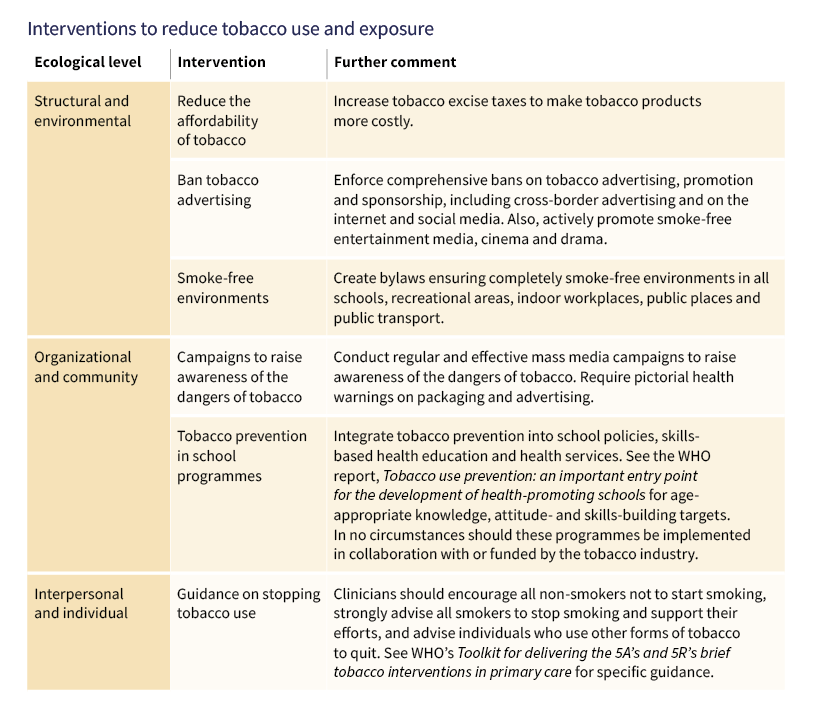
Tobacco kills up to half its users directly and many others through exposure to second-hand smoke. It is considered one of the biggest public health threats. When tobacco users become aware of the dangers of tobacco, most want to quit. However, nicotine in tobacco products is highly addictive; without cessation support, only 4% of users who attempt to quit tobacco use succeed. Professional support and proven cessation medications can more than double a tobacco user’s chances of quitting. These and other interventions are presented in the table below.

Increasingly, young people are being exposed to electronic nicotine delivery systems (ENDS), also known as vaping or electronic cigarettes (e-cigarette). E-cigarettes are particularly risky when used by adolescents. Nicotine is highly addictive and can affect young people’s brains, which continue to develop up to their mid-twenties.
Like tobacco smoking, ENDS use increases the risk of heart disease and lung disorders. There is some evidence of a link between adolescent vaping and smoking initiation. However, it is too early to provide a clear answer on the long-term impacts of using e-cigarettes or being exposed to them.
Advertising, marketing and promotion of ENDS have grown rapidly, through internet and social media channels in particular. In many cases, this marketing gives rise to concern about deceptive health claims, deceptive claims about the ease of stopping, and targeting youth (especially with the use of flavours).


